Sacred Silence
A Pathway to Compassion, Unity, and Peace
At the heart of all religious traditions and spiritual practices lies a deep well of silence, which, as Richard Rohr beautifully states, can “absorb paradoxes, contradictions and the challenges of life.” Like the “dark energy” of the universe, once thought to be merely empty, dead space, and now believed to be alive with creative energy, this divine silence is the source of the true power of any faith and the pathway to compassion, unity, and peace. This, the mystics of all ages and spiritual traditions have always known.
These days, though we may have been told that direct experience of the divine was rare and reserved for monks and ascetics, more and more of us are coming to see that such direct experience is not only possible, but necessary, and are seeking it wherever it may be found. The “nones,” those who are unaffiliated with any religious denomination or sect, now make up the fastest growing spiritual movement in the United States and include about 20 percent of American adults. Their refusal to limit themselves to one faith tradition allows for a range of choices unprecedented in the history of religion. This makes for very exciting, if unsettling, times as spirituality moves out of the pews and into the streets, offices, homes, and hearts of everyday people, fueled by divine energy and nourished by divine silence.
Each of our five featured authors touches on an aspect of this developing trend and helps illuminate the path to spiritual maturity.
The Ox-Herder and the Good Shepherd
Finding Christ on the Buddha’s Path
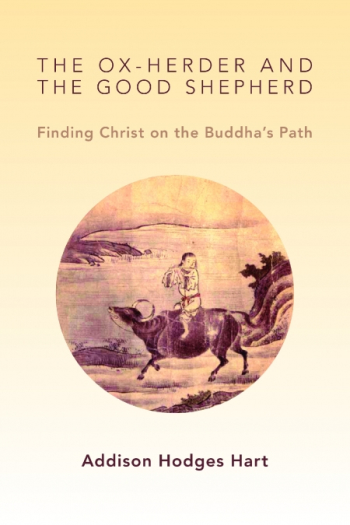
Addison Hodges Hart
Wm. B. Eerdmans Publishing
Softcover $15.00 (126pp)
978-0-8028-6758-2
Buy: Local Bookstore (Bookshop)
Addison Hodges Hart begins with a statement that some Christians, and many who no longer call themselves Christian, may find astounding. He says that Christians are interiorly free to seek the truth wherever it may be found, without fear of the location of that truth, even if it be outside the Bible and the church.
Hart is a retired pastor and university chaplain and the author of Taking Jesus at His Word: What Jesus Really Said in the Sermon on the Mount and The Yoke of Jesus: A School for the Soul in Solitude. He takes the ten ox-herder drawings by the Chinese Zen master KakuanShien, each with its own poem and reflective commentary by the twelfth-century sage, and weaves a compelling case for just how much Zen Buddhism and Christianity have in common. The Zen Buddhist tale of the “Ox-Herder” and Christianity’s story of “The Good Shepherd” are parables of finding the lost, he says. Each, in its own way, reveals the heart of the seeker, and, at a deeper level, each reveals the nature of the One that is being sought and where that One ultimately resides.
While this small book can be read in one sitting, it welcomes, and merits, a more leisurely and contemplative approach. Gentle, wise, and respectful, Addison’s book illuminates the way of the bodhisattva—or the enlightened disciple—showing it to be a shared path that leads to mercy, healing, forgiveness, and abundant life.
KRISTINE MORRIS (February 27, 2014)
The Answer to Bad Religion Is Not No Religion
A Guide to Good Religion for Seekers, Skeptics, and Believers
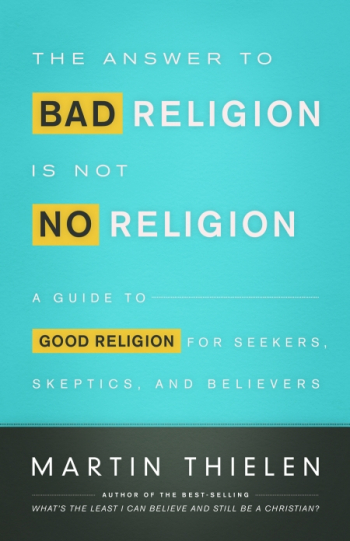
Martin Thielen
Westminster John Knox Press
Softcover $15.00 (178pp)
978-0-664-23947-3
Buy: Local Bookstore (Bookshop)
Martin Thielen credits religion with having contributed to the betterment of the world by establishing educational institutions like Oxford, Harvard, Cambridge, and Yale; building and servicing hospitals; creating the first charitable organizations, including the Red Cross, World Relief, The Salvation Army, and others; working to end child labor and slavery; and fueling the American Civil Rights movement. Religious organizations are also central to feeding the hungry and caring for the homeless and abandoned. Why then, are so many Americans turning away from organized religion?
Research has revealed that it’s because, by the early 1990s, most Americans had come to identify Christianity with Religious Right fundamentalism. Thielen, senior pastor of the Cookeville United Methodist Church in Cookeville, Tennessee, and the author of the bestselling What’s the Least I Can Believe and Still Be a Christian, says that “a growing number of Americans are starving for an alternative to closed-minded, judgmental, partisan, antiwomen, antiscience religion. Instead, they are searching for a positive, grace-filled, open-minded, gender-equal faith option”—an option that he believes is available in America’s moderate mainline denominations.
While admitting that bad religion abounds in today’s world, Thielen contends that abandoning religion is not the answer; his moving stories of real people who have been hurt or turned off by bad religion and have found comfort and healing in good religion offer hope that it isn’t necessary to leave Christianity behind—only to find a faith home that prioritizes love and the characteristics that make Jesus so appealing: humility, grace, mercy, compassion, and justice.
KRISTINE MORRIS (February 27, 2014)
Perennial Wisdom for the Spiritually Independent
Sacred Teachings Annotated and Explained
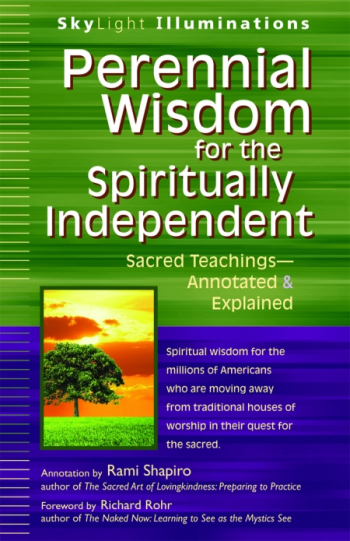
Rami Shapiro
Richard Rohr, compiler
Skylight Paths Publishing
Softcover $16.99 (313pp)
978-1-59473-515-8
Buy: Local Bookstore (Bookshop)
At the heart of any search for meaning lie several basic questions that have spurred seekers throughout the ages: Who am I? Where did I come from? Where am I going? How shall I live, and why? Rabbi Rami Shapiro has addressed these questions with wisdom from the world’s sacred and philosophical teachings and his own illuminating commentary, enhanced by Eknath Easwaran’s practice of “Passage Meditation, to create a ‘bible’ for the spiritually independent.”
In sharing the fruit of his own search for meaning, Shapiro has admirably stepped into the role of guide to independent seekers. He has come to know that all diversity is part of a greater unity; that the sense of a separate self is a functional necessity rather than an absolute reality; that suffering is rooted in mistaking the limited and labeled self as the truest self; and that, with practice, it’s possible to shift one’s awareness from the limited egoic self to the infinite divine Self that is all Reality. He writes: “Because you know all the names of God can be of value, you are free to explore the sacred literatures of the world to cull the wisdom they have to offer. Because you know that no name is exclusively God, you are free from having to surrender yourself to any one name or system of belief…You are open to wisdom from whatever system of belief it may come, and yet free from having to believe in that system as a whole in order to benefit from its wisdom.”
There is no fixed destination on the spiritual path, Shapiro writes, only a moving from fear to love, from a closed mind to an open mind, from a constricted heart to an open heart. This book beautifully shows the way.
KRISTINE MORRIS (February 27, 2014)
Silent Compassion
Finding God in Contemplation
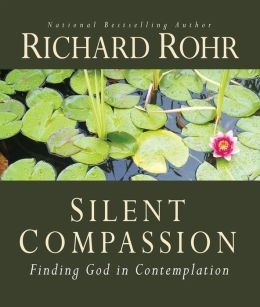
Richard Rohr
Franciscan Media
Softcover $12.99 (96pp)
978-1-61636-757-2
By entering into the silence that is common to all, we encounter the source beyond all stories, and come forth with greater compassion, enhanced abilities for non-dual thought, patience, and unshakable hope. We come to know that none of the models put forth in a culture’s myths, including our own, are truth. That being the case, why should we argue? This silence, writes Richard Rohr, can “absorb paradoxes, contradictions and the challenges of life.” In it, we meet God and experience the indwelling presence for ourselves.
Rohr is a Franciscan priest, teacher, noted author, and founder and director of the Center for Action and Contemplation in Albuquerque, New Mexico. He writes that “any systematic teaching of contemplation has been lost to the Western churches for most of five centuries…Even Catholic contemplative religious orders stopped teaching it to their own members, which was quite a loss indeed.” The result has been discord and division among Christians.
Rohr declares that “the Sunday service alone seldom leads people on deeper or even real journeys.” Yet, we are told to keep coming back—that if we do, we’ll eventually “get it.” But we don’t, because those in charge haven’t “got it” either.
What is needed today, according to Rohr, are “living models” of the contemplative mind.“Whenever you see a movement into solitude or hermitage or quiet or any kind of aloneness, you know you have non-dual contemplative consciousness emerging,” he writes.
Rohr’s book gives an honest, and sometimes surprising, look at the richness of an inner life nourished by compassionate silence.
KRISTINE MORRIS (February 27, 2014)
Visions of Vocation
Common Grace for the Common Good
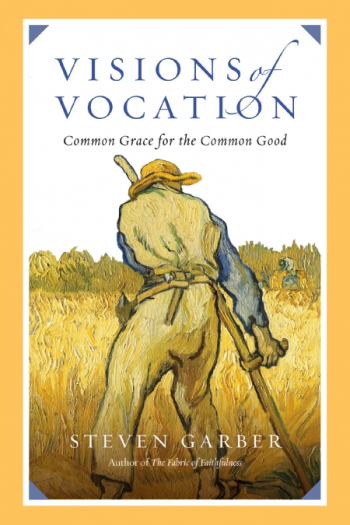
Steven Garber
InterVarsity Press
Softcover $16.00 (224pp)
978-0-8308-3666-6
Buy: Local Bookstore (Bookshop)
A vocation is much more than a job, writes Steven Garber in this book for all who want their work life to reflect their innermost beliefs and values. Garber, an educator, author, and the founder and principal of The Washington Institute for Faith, Vocation and Culture, writes that our vocation, and our most difficult task, involves answering the question: “Knowing what I know, what will I do?”
“Always and everywhere, this is our challenge as human beings,” he writes. “Can we know and love the world at the very same time? Knowing its glories and shames, can we still choose to love?”
Garber’s Christian faith leads him to see the world as a “covenantal cosmos,” one in which the most ordinary elements of life can be made holy and can serve to connect Heaven and Earth. His book is filled with the stories of those who have chosen to look at the imperfect, broken world with the eyes of the heart, those who serve a God who also “has tears.” They also know that sorrow is not the whole story; life is also full of wonder, meaning, and joy—much of which we find by means of our vocation.
“There are flowers to be grown, songs to be sung, bread to be baked, justice to be done, mercy to be shown, houses to be built, technologies to be developed, fields to farm and children to educate,” writes Garber. “All day, every day, there are both wounds and wonders at the very heart of life, if we have eyes to see.” When, with open eyes and hearts, we love the world through our work, we become “common grace for the common good.”
KRISTINE MORRIS (February 27, 2014)
Kristine Morris
